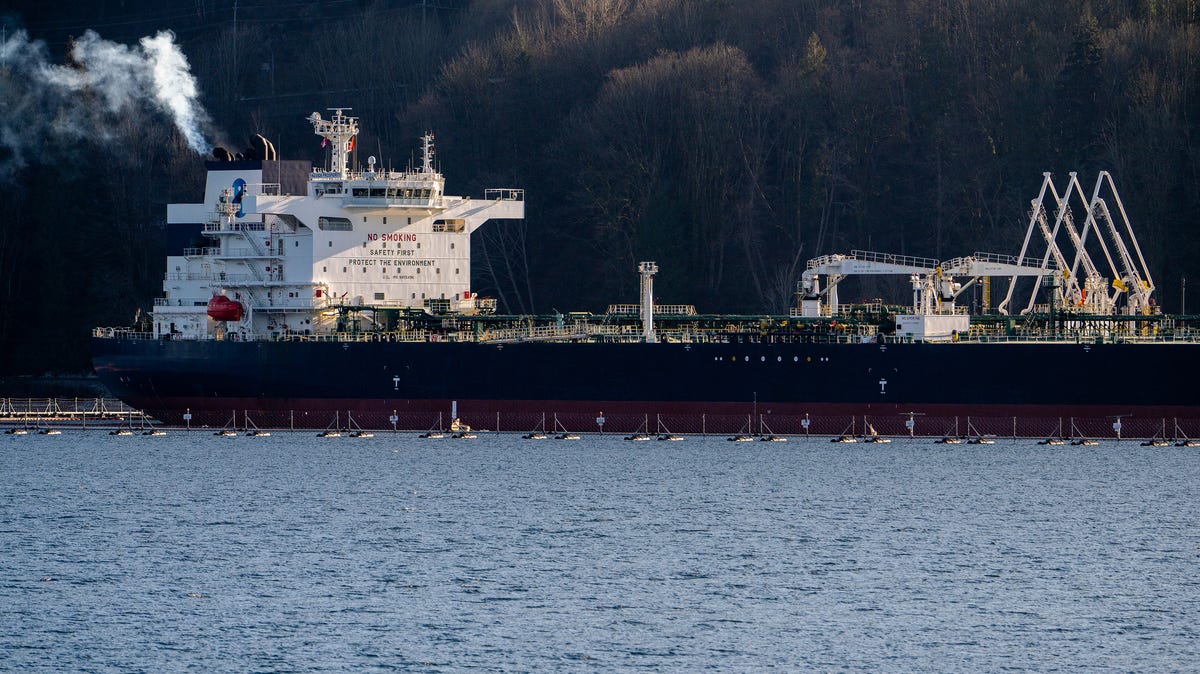Canadian crude oil. It’s thick, it oozes, and U.S. refineries in the Midwest and along the Gulf Coast specialize at turning it into gasoline, diesel, and jet fuel. These products heat homes and keep these regional economies churning. U.S. refineries also export many of these finished fuels back to Canada. Yet, this cross-national energy ecosystem will be disrupted by tariffs that started on March 4.
That’s the date President Trump implemented his executive order calling for import duties to deal with the flow of fentanyl from Canada. The tariffs had been slated for Feb. 4, but Ottawa got a 30-day reprieve by tightening its border. Ottawa wanted to use this time to negotiate a longer—if not permanent—ceasefire. That effort was ultimately fruitless.
Not because of fentanyl, mind you. Rather, the problem largely owes to a clause in Trump’s executive order that triggers bigger tariffs if Canada retaliates. So, while the duty on crude oil was set at 10%—versus the 25% levied on non-energy products—to lessen the harm done to American consumers and manufacturers, it’s unlikely that this modest rate will hold for long. For example, Canada has already announced a two-phase reprisal, including both tariffs and non-tariff barriers.
Yet, even if Canada promised not to hit back for Trump’s fentanyl tariffs, the duty on crude oil will likely go up just eight days after March 4. Why? Because it’s not obvious that the clause in Trump’s executive order is only triggered by Canada retaliating for these specific tariffs versus others. Take, for example, Trump’s revamped steel and aluminum tariffs. Canada has vowed a robust response. Will this pave the way for Trump to up the ante under the provisions concerning fentanyl tariffs?
If so, then the lower-than-feared duty on crude oil will be fleeting. Trump gets some credit for having shown restraint in proposing a 10% duty, given the damage a 25% rate would do to the swing-state voters in the Midwest who put him back in the White House. But this isn’t Trump 1.0. America’s trade partners had a good idea of what to expect under Trump 2.0, and they’ve prepared creative tit-for-tat reprisals. Mexico, for example, has said it will use “carousel retaliation,” meaning that its targeted list will rotate, causing panic even among U.S. exporters that get a temporary pass. Canada has weighed the use of non-tariff barriers, presumably including regulatory measures that could shut out key American agricultural products. And China is conducting anti-trust investigations of leading U.S. technology firms. These actions are meant to compel Trump to negotiate by standing firm, not backing down. Trump bet that he’d have escalation dominance, and he doesn’t.
Speaking of trade relations with Canada, Trump recently quipped that “we don’t need their oil and gas, we have more than anybody.” It’s true that the U.S. is by far the world’s largest producer of crude oil. But in 2023, the U.S. still imported 6.5 million barrels each day, 60% of which came from Canada. This trade volume reflects America’s substantial investments in refining capacity and pipeline technology to source from a trusted supplier. U.S. refiners were built to process Canadian crude oil, and no tariff will change that for decades. To spin Trump’s quote, Canada is the only option for Midwestern refineries, while for refineries on the Gulf Coast, the alternative would be Venezuela.
One of the tenets of Trump’s tariff narrative is that exporters will eat the cost of the duties. Some analysts predict that Canadian suppliers will bear some of the burden, but not all, and not if the rate climbs above 10%. The bottom line is that even without Canadian retaliation, a tariff on crude oil will lower the margins earned by U.S. refineries, even after passing some of the cost on to consumers. Who stands to benefit? The European and Asian refiners that fill in the gaps in the U.S.
If the tariff goes higher than 10% because Canada retaliated and (or) Trump escalates, then China could be the ultimate winner. Canada would have an incentivize to reroute crude oil via the Trans Mountain Pipeline to its West Coast and on to Asia, where China is the most efficient refiner and has ample excess capacity to meet surging demand, both domestically and across the region.
Trump should negotiate an energy pact with Canada, rather than enact energy tariffs. Canadian crude oil, and the supply chains that get it to the Midwest and Gulf Coast, helped the nation achieve energy security. A crude oil tariff will put America back, not first.
Marc L. Busch is the Karl F. Landegger Professor of International Business Diplomacy at the Walsh School of Foreign Service, Georgetown University.
